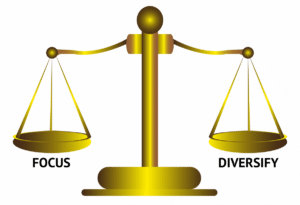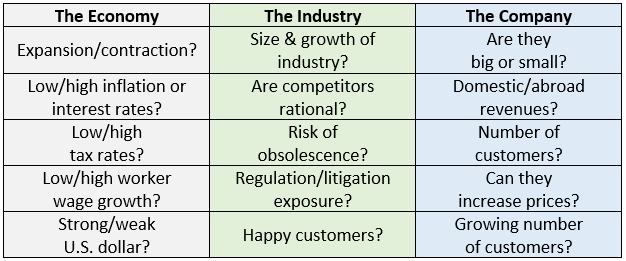A common question clients ask is something along the lines of “are my investments diversified?” What follows will help you determine whether that’s important for your financial life.
In our world, diversification means investing in multiple areas rather than concentrating money on one idea. If we had a newspaper from the future printed on the day you retire, we’d quickly turn to the business section, pick the stock that has performed the best over the years, and own just that. However, until Marty McFly picks you up in his time-traveling DeLorean, we’ll have to invest in a range of companies we think can do well!
That’s takeaway #1 – Diversification does not maximize your return.
Instead, it may help to reduce your risk. It’s a polite way to say, “I don’t want to lose a lot of my money!”
Many professionals focus on how many different investments you own. We think that’s too narrow and not very useful for our discussion. For example, most investors would agree a portfolio of 250 stocks offers substantial diversification. Yet, while the average S&P 500 stock returned 30% last year, an equally weighted portfolio of the 250 best-performing stocks increased +52%, while the worst 250 increased just 8%. That is a massive difference in outcomes, despite owning so many stocks!

We believe it’s more productive to consider the characteristics of each investment and how they may respond in different outcomes. The table below shows some of the variables we consider when diversifying your company (stock) investments.
Each company (and its stock price) will respond differently based on what happens in the future. You can imagine that owning a portfolio of 25 U.S. banks wouldn’t provide as many diversification benefits as owning a portfolio of technology, healthcare, real estate, and international companies. The financial health of banks depends on U.S. economic growth and interest rates—they tend to do well when both are rising and face adversity otherwise.
Owning companies in different industries means some will do well while others won’t—that balances out how your portfolio performs in “different” versions of the future. This concept is important to us. We look to build an “all-weather” portfolio that can be resilient no matter which way the wind blows (or which version of the future comes to pass).
Takeaway #2 – There is more to diversification than just the number of investments you own
We’ve come to believe investing in 20-30 businesses provides a nice balance of focusing on our best ideas with the benefits of diversification.
- Focus: Academic research in this department concludes you’re better off investing in a smaller number of your best ideas (April 21, 2021).
- Diversification: Even if one of those 20-30 companies becomes worthless, your wealth would decline by just 3-5%, and other investments could offset that.

Takeaway #3 – Find your own balance between building wealth and managing risk.
So, the next time someone asks about diversification, you’ll have a good handle on what it is and why it matters.







